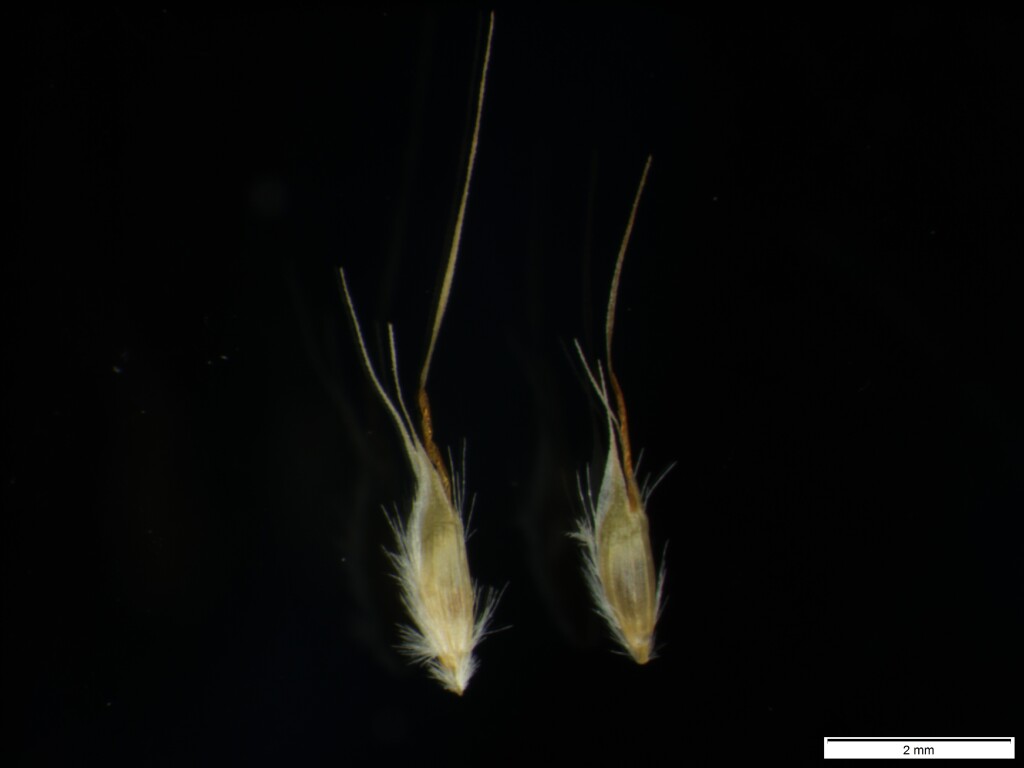Rytidosperma setaceum
(R.Br.) Connor & Edgar Bristly Wallaby-grassVariable, tufted perennial. Culms to 70 cm high. Leaves with sparse to moderately dense spreading hairs, rarely glabrous; blade typically finely inrolled, to 25 cm long and 1 mm wide. Panicle lanceolate, mostly dense, occasionally appearing one-sided, mostly 3–8 cm long. Spikelets green or purplish, 4–10-flowered; glumes subequal, narrowly acute, (8–)c. 10(–16) mm long; lemma 2–3.5 mm long, with 2 more or less complete rows of hairs, sometimes with a few scattered hairs between the rows, the upper series to c. 3 mm long, occasionally reduced to a few tufts; lateral lobes erect, mostly 6–12 mm long, narrow-acuminate, the flat part usually 2–3 mm long; central awn exceeding lateral lobes by 3–6 mm; palea narrowly elliptic to oblanceolate, exceeding the sinus by up to 1 mm (rarely more); anthers red. Flowers mainly Oct.–Jan.
LoM, MuM, Wim, GleP, Brid, VVP, VRiv, MSB, RobP, MuF, GipP, OtP, WaP, Gold, CVU, GGr, DunT, NIS, EGL, EGU, WPro, HSF, HNF, OtR, Strz, VAlp. Also WA, SA. NSW, ACT, Tas. Generally occurring in dryish environments but tolerant of most conditions, uncommon in the alps and far north-west.
Rytidosperma setaceum is probably the commonest member of the genus in the State, largely co-extensive with the often similar R. caespitosum from which it is best distinguished by its generally smaller size, finer foliage, relatively narrower lemma lobes and relatively shorter and broader palea.
Plants with shorter lemma lobes and somewhat contracted panicles have previously been treated as a distinct variety, R. setaceum var. brevisetum.
Walsh, N.G. (1994). Poaceae. In: Walsh, N.G.; Entwisle, T.J., Flora of Victoria Vol. 2, Ferns and Allied Plants, Conifers and Monocotyledons, pp. 356–627. Inkata Press, Melbourne.
 Spinning
Spinning


